An Introduction to the Importance of Multilingual Website Design in Today’s World
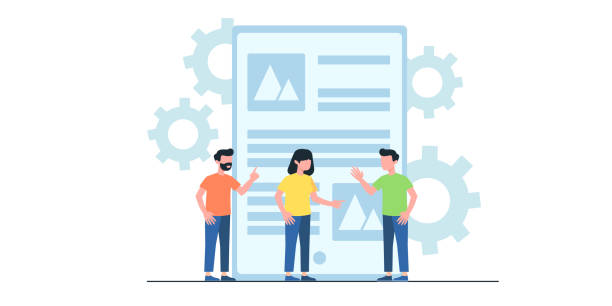
In the era of #globalization and the unprecedented expansion of #digital_markets, the ability to communicate with audiences from different cultures and languages is no longer a luxury option, but a strategic necessity.
Multilingual website design enables businesses to step beyond their geographical and cultural boundaries and reach a wider #customer_base.
This approach not only strengthens your digital marketing but also directly impacts user experience (UX).
When a visitor can view your website content in their native language, they will feel more comfortable and trusting, which in turn increases conversion rates.
This explanatory and educational section provides the foundation for understanding the importance of this vital topic and helps you gain a comprehensive view of the infinite potentials of multilingual website design.
Given the intense competition in the online space, neglecting this aspect can lead to missing golden opportunities in international markets.
The goal of this section is to clarify why investing in a website structure with multiple language capabilities is an essential step towards sustainable success.
Are you losing business opportunities because of an outdated website? With Rasavob, solve the problem of not attracting potential customers through your website forever!
✅ Attract more quality leads
✅ Increase brand credibility in the eyes of customers
⚡ Get a free consultation for corporate website design
Key Benefits of Multilingual Websites: Increased Accessibility and Improved SEO

Multilingual website design goes beyond a simple translation; it’s a powerful strategy to expand your digital influence.
One of its most prominent advantages is the significant increase in accessibility to new markets.
By providing content in different languages, you will be able to reach audiences that were previously beyond your reach due to language barriers.
This is especially vital for businesses seeking international expansion.
From an SEO perspective, multilingual websites offer unparalleled opportunities.
You can target local and culturally relevant keywords for each language, which helps search engines better understand your content and display it to appropriate users.
Using hreflang tags and appropriate URL structures for each language sends clear signals to search engines about the content’s relevance to different geographical regions, which is an analytical and guiding step towards improving your global ranking.
Ultimately, this approach means increased organic traffic, customer trust, and brand enhancement on a global scale.
This section demonstrates in detail how a website structure with multiple language capabilities can pave your way to dominating the global market.
Essential Considerations Before Starting a Multilingual Website Design Project

Before starting work on multilingual website design, careful planning and considering key aspects are of paramount importance.
This specialized and guiding phase will ensure the long-term success of your project.
First, you must accurately identify your target market.
Which languages and geographical regions are priorities for your business? This choice not only affects the languages that need to be supported but also impacts your content, design, and even marketing strategies.
Next, you need to evaluate your website content.
Does all content require translation, or only specific parts of it? Translation quality is also crucial; machine translation is often insufficient and can damage your brand’s credibility.
Translation by native speakers and experts in your field is the best option.
Finally, technical and infrastructure aspects must be considered.
Does your current platform support multilingual capabilities, or do you need to upgrade or change platforms? The choice of URL structure (subdomain, subdirectory, or separate domain) is also determined at this stage.
These initial decisions form the foundation of a successful and efficient multilingual website design.
The table below will assist you in the initial planning process:
| Consideration | Explanation | Importance |
|---|---|---|
| Target Market and Language Identification | Selecting key languages based on demographics and market potential. | Determining the overall project direction and resource allocation. |
| Content Evaluation and Preparation | Deciding on the volume and type of content requiring translation and choosing the translation method (human/machine). | Ensuring the quality and accuracy of information provided to foreign users. |
| Platform and URL Structure Selection | Assessing existing platform compatibility or selecting a new platform and determining the best technical structure for URLs. | Direct impact on SEO and site maintainability. |
| Budgeting and Scheduling | Allocating sufficient financial and time resources for translation, technical development, and maintenance. | Project management and prevention of delays and financial issues. |
Technical Approaches for Implementing a Multilingual Website

To implement a multilingual website design, several technical approaches exist, each with its own advantages and disadvantages.
Choosing the best method depends on factors such as budget, required scalability, and your current website structure.
This specialized and educational section examines three common methods:
1.
Subdomains: such as fr.example.com or de.example.com.
This approach helps search engines treat each language as a distinct entity, which can be beneficial for local SEO.
Managing this method can be slightly more complex because each subdomain technically operates as a separate website.
2.
Subdirectories: such as example.com/fr/ or example.com/de/.
This method is very popular for SEO as the authority of the main domain is transferred to all languages, and its management is also relatively easier.
Google and other search engines understand this structure well.
3.
Country Code Top-Level Domains (ccTLDs): such as example.fr or example.de.
This method sends the strongest geographical signal to search engines and is ideal for businesses targeting completely separate and localized markets.
However, the cost and complexity of managing multiple domains can be high.
In addition to these structures, using plugins or Content Management System (CMS) modules like WordPress Multilingual Plugin (WPML) for WordPress or similar modules for Joomla and Drupal is also very common.
The correct selection of these approaches is an important part of developing multicultural portals and affects the efficiency and maintainability of your website in the long run.
Is your current e-commerce website design not generating the expected sales for you?
Rasavob is an expert in professional e-commerce website design!
✅ An attractive and user-friendly website aimed at increasing sales
✅ High speed and security for an ideal shopping experience⚡ Get a free consultation for online store design with Rasavob!
Content Translation Strategies: Quality Preservation and Localization
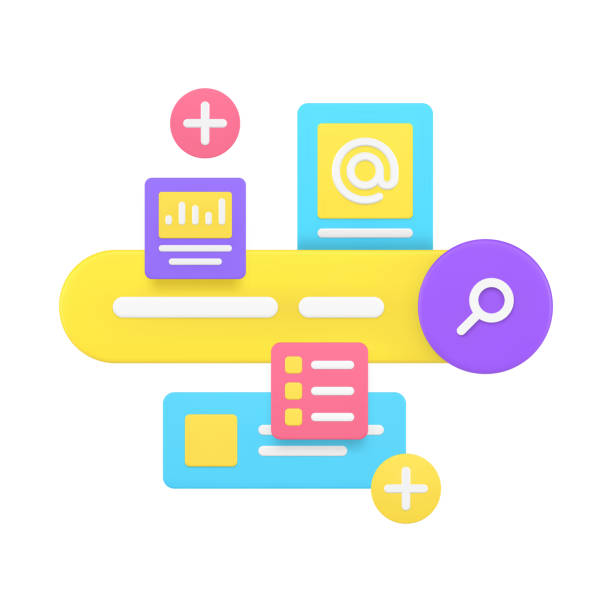
After choosing the technical approach for multilingual website design, it’s time for the most important part: content translation.
Translation quality directly impacts brand credibility and user experience.
In this specialized and guiding section, we examine different translation strategies and the importance of localization.
Human Translation: This method is the best option for ensuring accuracy, fluency, and the appropriate tone of content.
Native translators not only know the language but are also familiar with the culture, idioms, and specific sensitivities of that society.
This is especially crucial for marketing, legal, or technical content that requires high precision and deep understanding.
Using Localization goes beyond mere translation; in localization, content is adapted to be compatible with the local culture, customs, and even units of measurement and currency.
This makes users feel that the content was written for them and within their own culture.
Machine Translation (MT): Tools like Google Translate can offer high translation speed, but they often lack the necessary accuracy and can lead to dry, unnatural, or even incorrect translations.
MT can be useful for internal content or less critical sections, but it is never a substitute for human translation for the website’s main and sensitive content.
Hybrid Translation: A combination of machine translation and human editing (Post-Editing).
This method can increase speed while delivering acceptable quality, but it still requires careful review by a human translator.
Choosing the right strategy for a website structure with multiple language capabilities requires a careful evaluation of the content type, budget, and your expectations for the final quality.
SEO Optimization for Multilingual Sites: Tips and Tools
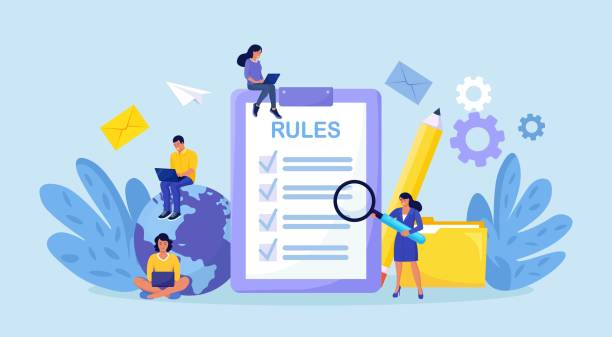
The success of a multilingual website design is inextricably linked to international SEO strategies.
Without proper optimization, even the best translations cannot reach your target audience.
This specialized and educational section introduces you to the most important tips and tools for multilingual website SEO.
1.
Hreflang Tag: This HTML tag (or HTTP header) informs search engines that different language versions of a page exist and helps them serve the correct content to the appropriate users.
Correct use of hreflang is vital for every page of your multilingual website.
2.
Multilingual XML Sitemap: Creating separate sitemaps for each language or a comprehensive sitemap that covers all languages using hreflang tags helps search engines crawl and index your content correctly.
3.
Local Keyword Research: Keywords may differ in various languages.
Conducting keyword research for each language separately helps you find phrases that native users actually search for.
4.
Geo-targeting: If you use ccTLDs, search engines automatically understand the geographical location.
For subdomains or subdirectories, you can use tools like Google Search Console for geographical targeting.
5.
Internal and External Linking: Ensure that internal linking between different language versions is correct.
Also, striving to acquire backlinks from reputable websites in each country can help your local SEO.
By adhering to these tips in your multilanguage website structure project, you can ensure that your site is well-visible in global markets.
User Experience and User Interface Design in Multilingual Websites

One of the often-overlooked aspects of multilingual website design is User Experience (UX) and User Interface (UI) design.
Simply translating content is not enough; your website must be optimized for users of each language and culture.
This guiding and entertaining section helps you build a website that not only performs excellently but also attracts users.
1.
Language Switcher: This element should be easily accessible and understandable.
It is usually placed in the header or footer of the website and is displayed with country flag symbols or language codes (e.g., EN, FR, DE).
Avoid using flags alone to indicate language, as one language may be spoken in multiple countries (e.g., Spanish).
2.
Text Direction (RTL/LTR): For languages like Persian or Arabic, which are read from right-to-left (RTL), the UI design must be completely opposite to left-to-right (LTR) languages.
This includes the direction of elements, menus, and even icons.
3.
Sufficient Space for Text: Translation can change the volume of text.
Some languages may require more space compared to English (e.g., German) or less (e.g., Chinese).
The design must be flexible to prevent layout disruption.
4.
Visual and Cultural Content: Images, videos, and icons must also be localized.
Some images may be appropriate in one culture but appear offensive or irrelevant in another.
Ultimately, developing multicultural portals requires a deep understanding of cultural differences to provide an exceptional user experience for all audiences.
| UI/UX Element | Importance in Multilingualism | Design Tips |
|---|---|---|
| Language Selector | Easy and clear access for changing language. | Use language codes (e.g., “ES” or “FR”) instead of flags; placement in header or footer. |
| Text Direction (RTL/LTR) | Full compatibility with right-to-left languages like Persian and Arabic. | Adjusting the direction of the entire page, menus, images, and forms. |
| Dynamic Text Space | Translated texts may have different lengths. | Use flexible and responsive layouts that adapt to different text lengths. |
| Localization of Images and Icons | Ensuring visual elements are appropriate for different cultures. | Avoid images with specific cultural connotations; use universal icons. |
| Date and Time Formats | Displaying dates and times according to local standards. | Using localization libraries for automatic formatting. |
Content Maintenance and Updates in Multilingual Websites
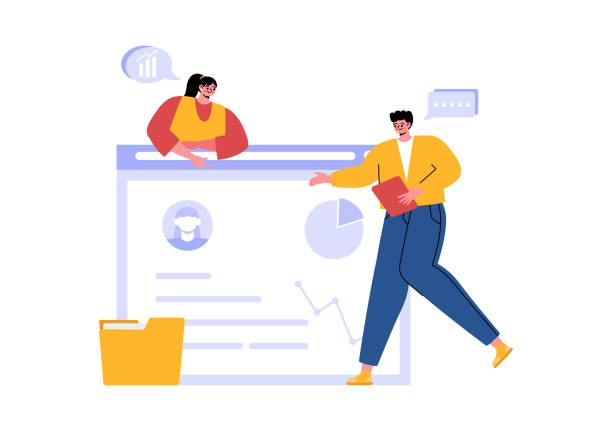
Multilingual website design is not a one-time project; it is an ongoing process that requires regular maintenance and updates of content in all languages.
Neglecting this aspect can lead to a loss of credibility and a reduction in user experience quality.
This specialized and guiding section helps you establish an effective plan for managing your multilingual content.
1.
New Content Translation Process: Whenever you add new content in your primary language, you should immediately have a plan for translating and publishing it in other languages.
Delays in this process can cause information inconsistencies between language versions.
2.
Periodic Review of Existing Content: Languages and cultures are dynamic.
Translated content should be periodically reviewed by native translators to ensure its accuracy, currency, and relevance to cultural changes.
This is particularly important for product information, news, and educational articles.
3.
Managing Design Changes: Any changes to the layout, menus, or visual elements of the website must be applied to all language versions and adjusted according to text direction and required space for each language.
4.
Technical Support and Troubleshooting: Continuous monitoring of website performance across all languages is essential.
Ensure that the language switcher works correctly, internal links are valid, and there are no 404 errors or content display issues.
By carefully planning for maintenance, you can ensure that your multilingual site remains efficient and engaging.
Are you frustrated with the low conversion rate of your e-commerce site? Rasavob transforms your e-commerce site into a powerful tool for attracting and converting customers!
✅ Significant increase in visitor-to-buyer conversion rate
✅ Unique user experience to enhance customer satisfaction and loyalty⚡ Get a free consultation from Rasavob!
Common Challenges in Multilingual Website Design and Solutions to Overcome Them
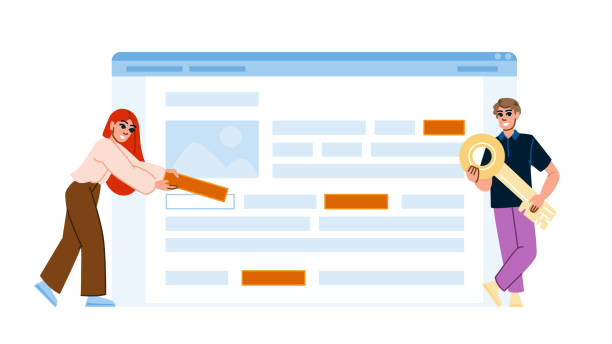
Multilingual website design, despite its numerous advantages, is not without challenges.
Awareness of these issues and having solutions to overcome them is crucial for project success.
This thought-provoking and guiding section addresses some of the most common challenges and how to deal with them.
1.
Poor Translation Quality: Machine translation or the use of unprofessional translators can lead to inaccurate, unnatural, or even offensive content.
Solution: Invest in professional and localized translation services.
Always have translations reviewed by a native speaker.
2.
International SEO Problems: Improper use of hreflang tags, duplicate content, and inadequate geographical targeting can lead to lower search engine rankings.
Solution: Train the SEO team in international SEO, use reputable tools to check hreflang, and continuously monitor SEO performance.
3.
Complex Content Management: Synchronizing and updating content in multiple languages can be time-consuming and error-prone.
Solution: Use a robust Content Management System (CMS) with native multilingual capabilities, or implement a Translation Management System (TMS) to automate processes.
4.
Cultural and Visual Challenges: Designs, colors, images, and even date/currency formats may be perceived differently in various cultures.
Solution: Conduct thorough cultural research and consult with local experts in design and user experience for each target market.
A successful multilanguage website structure project is one that turns these challenges into opportunities.
The Importance of Localization Beyond Mere Translation

Often, people confuse Localization with translation, while these two concepts, despite their close relationship, have fundamental differences.
In the context of multilingual website design, localization goes a step beyond mere literal translation, adapting content and user experience completely to the culture, norms, interests, and expectations of local audiences.
This specialized and guiding aspect is vital for achieving success in international markets.
Why is localization important? A translated text might be grammatically correct, but if it doesn’t align with the local culture, it can seem unnatural, irrelevant, or even offensive.
Localization includes:
– Adapting phrases and idioms: Using common local idioms instead of literal translations.
– Date, time, currency, and measurement formats: Displaying information in a way that is familiar and understandable to local users (e.g., using the Solar Hijri calendar in Iran or Fahrenheit in the USA).
– Images and visual elements: Selecting images and graphics that align with the local culture and do not create misinterpretations.
– Colors and symbols: Considering the meaning of colors and symbols in different cultures, as a color might have a positive meaning in one culture and a negative one in another.
– Local laws and regulations: Ensuring that website content complies with local laws and regulations (e.g., privacy laws).
A website design with multiple language capabilities is truly successful only when it is localized not only linguistically but also culturally, establishing a deeper connection with the audience.
Frequently Asked Questions
| Question | Answer |
|---|---|
| What is multilingual website design? | It is the design of a website whose content is available to users in several different languages, so that users can choose their desired language. |
| Why is a multilingual site important? | To access international audiences, increase website traffic, improve user experience for non-Persian speaking visitors, and expand business in global markets. |
| What are the benefits of having a multilingual site? | Increased international SEO, attracting new customers from different countries, enhancing business credibility and professionalism, and reducing bounce rate by providing understandable content. |
| What are the methods for implementing a multilingual site? | Using subdirectories (e.g., example.com/en/), subdomains (e.g., en.example.com), or separate top-level domains for each language (e.g., example.com and example.de). |
| What is the best URL structure for international SEO? | Subdirectories (e.g., example.com/en/) are often preferred for SEO due to the consolidation of main domain authority, although each method has its advantages and disadvantages. |
| How does a multilingual site affect SEO? | By providing content in different languages, the site appears in local search results for those languages, click-through rates and traffic increase, and the overall domain authority improves. Correct use of hreflang tags is crucial. |
| How is content translation managed? | One can use professional translators, machine translation tools (with human editing), or Content Management Systems (CMS) with built-in multilingual capabilities or relevant plugins. |
| What are the common challenges in multilingual website design? | Managing translated content, maintaining design consistency across different languages, adapting to right-to-left (RTL) languages like Persian and Arabic, optimizing SEO for each language, and choosing the appropriate URL structure. |
| How do I manage text direction (LTR/RTL) on a multilingual site? | For right-to-left languages (like Persian), you need to apply specific CSS styles to change text direction, element layout, and table direction. This is often done using the ‘direction: rtl;’ property and other related settings. |
| How can users change the site language? | Typically by using a button, dropdown menu, or language selector widget clearly placed in the site’s header or footer. Automatic detection of the user’s browser language and suggesting a language change is also common. |
And other advertising services by Rasa Web Advertising Agency
Introducing microblading device sellers on commercial websites
Listing ads for cosmetic tool storage trolleys on online websites
Advertising UV lamps for nail gel dryers in commercial directories
Ads for hair removal device sales on commercial platforms
Registering professional hairdressing comb sellers on digital sites
And over hundreds of other services in the field of internet advertising, advertising consulting, and organizational solutions
Internet Advertising | Advertising Strategy | Advertorials
🚀 Transform your business’s digital presence with Rasa Web’s internet advertising strategies and advertorials.
📍 Tehran, Mirdamad Street, next to Bank Markazi, Southern Kazeroon Alley, Ramin Alley No. 6

